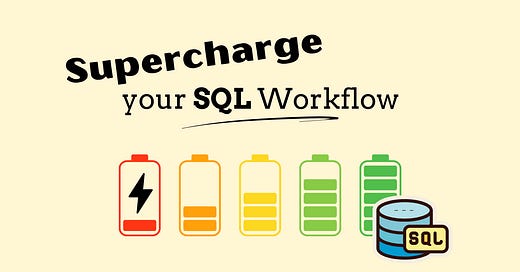Python + SQL for Data Analysts: Best Practices to Supercharge Your Workflow
Learn how to optimize Python and SQL integration for better data analysis, faster queries, and scalable applications with expert tips and best practices.
Let’s be honest—these days, nearly every decision worth its salt is powered by data. It’s the backbone of smart choices in businesses, research, and even everyday life.
And here’s the good news: Python and SQL aren’t just powerful tools on their own—they’re an unbeatable duo when it comes to managing and analyzing databases quickly and effectively.
This article is all about bringing it all together. I’ll share actionable tips, best practices, and insights you can apply directly to your work. And to top it off, you’ll dive into one last hands-on project—a practical way to solidify everything you’ve learned so far.
👉 Real quick nerds, in case you missed it I currently have a limited time lifetime discount on annual subscriptions so you can access content like this as soon as I release it. Check out the special holiday offer here!
The offer goes away next week! Happy Holidays Nerds 🤓
Each week, I dive deep into Python and beyond, breaking it down into bite-sized pieces. While everyone else gets just a taste, my premium readers get the whole feast! Don't miss out on the full experience – join us today!
If you’ve been following along with our SQL in Python series, you’ve already learned how to use the pandas library to seamlessly pull SQL query results into DataFrames, making data analysis both efficient and intuitive.
But now, as we come to the final chapter of this series, we’re not just here to recap—we’re here to level up.
While this may be the last article in the series, I can assure you I am not done with these topics as there is so much to cover. But this will give me a chance to write some other articles surrounding other topics that aren’t strictly SQL.
In fact my premium readers can leave feedback at the bottom of all my articles with any topics you’d like me to cover here for you!
I’m planning out two new series for you all that will focus heavily towards Machine Learning and Deep Learning, these will come out early next year so you can make the most of 2025!
If you haven’t subscribed to my premium content yet, you should definitely check it out. You gain full access to all of these articles and all the code that comes with them, so you can follow along!
Plus, you’ll get access to so much more, like monthly Python projects, in-depth weekly articles, the '3 Randoms' series, and my complete archive!
This is my full-time job so I hope you will support my work.
I spend a lot of my week on these articles, so if you find it valuable, consider joining premium. It really helps me keep going and lets me know you’re getting something out of my work!
If you’re already a premium reader, thank you from the bottom of my heart! You can leave feedback and recommend topics and projects at the bottom of all my articles.
👉 If you get value from this article, please help me out and leave it a ❤️. This helps more people discover this newsletter on Substack! Thank you so much!
In case you want to check out the full SQL in Python series here. Now, let’s learn how to bridge a SQL database into a Pandas dataframe!
Ready to wrap it all up and take your skills to the next level? Let’s get started.
Keep reading with a 7-day free trial
Subscribe to The Nerd Nook to keep reading this post and get 7 days of free access to the full post archives.





